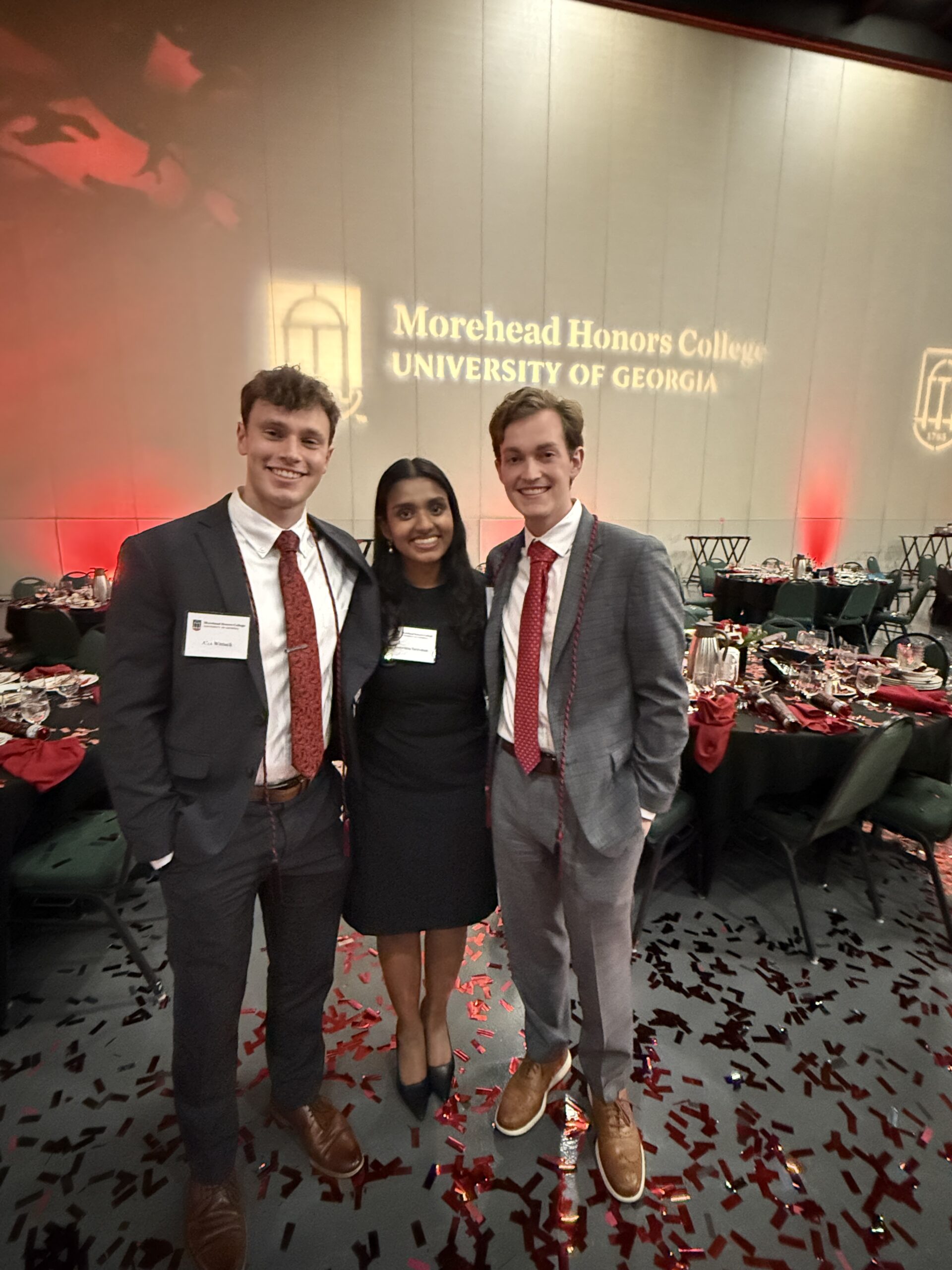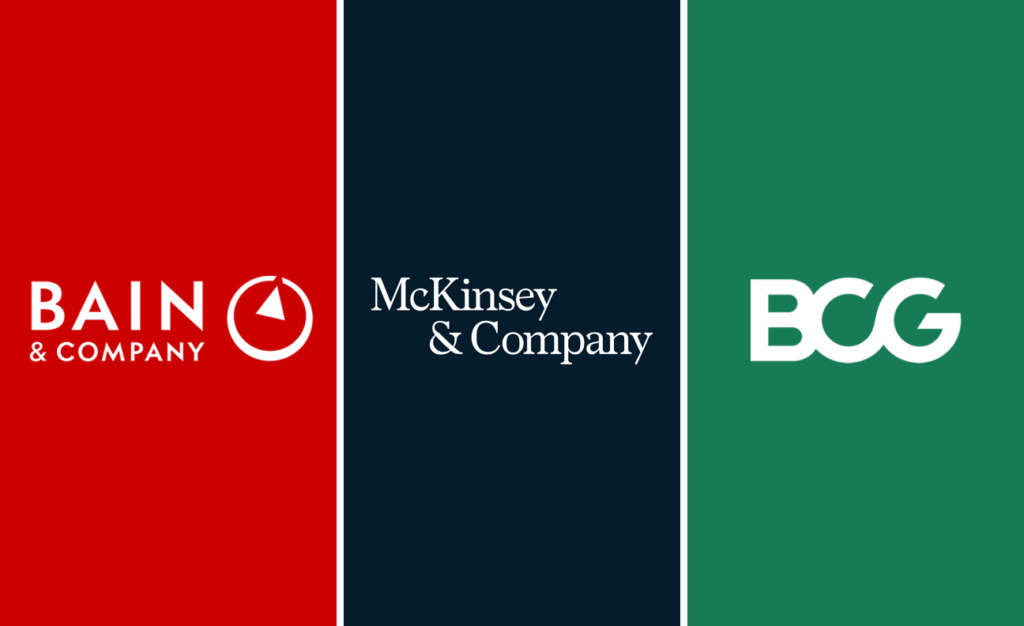We’ve all been there – trying to break into consulting, but the #1 obstacle in your path is that terrorizing case. It can be such a new and intimidating way of interviewing at first. At least for us, and you may agree, you cannot just learn how to case in class. You need a step-by-step guide or how-to tutorial to explain the process. Then, you simply have to practice over and over again to feel confident (easy enough, right?). However, the important part about casing is setting yourself apart from the crowd of other interviewees going through the same process! As you case, you are aiming for consistency and growth, not the usage of the same standard framework everytime you case. Rather, you should reflect on your feedback and learn how to implement it with each new case. Every time you case you will be doing something new, so rather than trying to be perfect, try to analyze the core bit of the case. Be interested and willing to adjust to the new situation and learn the problem!
This overview is going to take you through the core aspects of the case with a few tips. Since apps are around the corner, we wanted to share these tips with you! Remember, you cannot do a case if you do not know the structure of it!!! You must master these basic principles before you can fully conquer the case, so get at it! But, one second. Before you get into the case, we wanted to provide you with an example of how we set up our sheet of paper before a case. So, here you go!

The main parts of the case are as following:
- The Prompt
- Read Back
- Clarifying Questions
- Framework
- Quant/Qual Analysis
- Conclusion
- The Prompt
The Prompt can be either 1) interviewer-led (you get a whole boatload of info) or 2) interview-ee led (you get very little contextual info). On your piece of paper, write down everything, even if it’s a one line phrase of “Your client is interested in pursuing XXX.” Get used to jotting down notes fast as the interviewer will be speaking at a regular conversational pace.
- The Read Back
Do not forget to do this! First start with an “Oh this seems really interesting, I haven’t heard of XX before, but I am excited to solve this with you!” or “This is super cool, I actually have done XX!” It is always good to add a personal touch or show some personal connection to the prompt (remember, find ways to stand out!). Then, restate ALL of the information verbatim. This is crucial because if you’re missing something important, the interviewer will clarify.
- The Clarifying Questions
After you read back the prompt, you want to ask some clarifying questions. These are questions that can help you better understand the problem or the client. You typically want to ask 4-5 questions max. Sometimes it will flow naturally, other times it will not, but you HAVE to ask at least 2-3. Some examples of questions are: “Why are we pursuing XX?”; “Is this problem occurring across the market?”; “Are we based only in a particular region or across the globe?”; “Would acquiring this company allow us to develop synergies in X that we are curious to explore?” This isn’t an exhaustive list by any means, but it gives you a place to start as you begin your casing journey.
But, your final question should always be: “Are there any other objectives we would like to pursue?” Although not always the case, some cases have an additional motive that you may not otherwise realize unless you explicitly ask the interviewer.
- The Framework
Okay, we know that was a lot, but you got this! We are now into the meat of the case. Going into the framework you want to ask: “Do you mind giving me some time to lay out my initial thoughts?” This should really take 1:15 minutes, 1:30 max. And, you NEED at least 3 proper “buckets” although using that jargon is bad and feels bot-ish. Rather, when you are explaining your ideas later, consider using phrasing like “There are three main areas I want to focus on.” You’re probably wondering what these three “buckets” could even be, so here are some ideas. If you have a profitability case, you could do profit, market, and a creative bucket (Dawson usually does expansion/innovation capabilities). If you are investigating a new market, you should have a market sizing bucket.
The largest and MOST important consideration is that every case is unique so you have to fit the ideas around the problem, don’t smash a profitability framework on a market entry case. This is immature and shows you are not fully paying attention. Also, there is no “right answer” with your framework. The interviewer wants to see you consider all important aspects of the situation at hand, employ problem solving skills, and organize ideas strategically.
Before you start explaining everything within your buckets, you need to lay out the general overview. Start with, “Ok, I would like to investigate, A then B and then C.” It should be progressive. For example, in a profitability case, it would make sense to first investigate the profit of an item, then the market we are selling in, and lastly, creative ideas to grow. Remember, the interviewer can’t see your paper or read your mind. You need to communicate your thoughts clearly and concisely. Give them the roadmap for your framework before you start throwing a million ideas at them. Next, you should start explaining the ideas within each bucket. Overall, do not see this as a case, see it as a fun exploration of ideas and conversation exploring a concern.
Tip: interlace your own experiences. Mention things about your experience or background that show why you think a certain way. You want this to feel conversational. Connect with the case and the interviewer.
- The Quant/Qual Analysis
Once you finish the framework, you should always take initiative and suggest where to investigate first. You might be correct in your instinct or they may want to completely re-direct the case. Just remember to consistently drive the case forward. Regardless, the interviewer will now have some qualitative and quantitative questions for you.
Quant = math. Maybe you need to calculate the profit of an item or the amount of units you need to sell to breakeven. These calculations are never too complicated. However, if you are asked to calculate, say, the profitability, and you don’t have the values for revenue or costs, ask for them! The interviewer rarely provides you with all of the information you need. When going through the math, be extremely detailed. Before you start calculating anything, explain what process you’re going to take without using numbers. If you make a mistake in your layout, they can catch it. Once you start plugging in numbers, talk through the math and be specific. Remember, once again, the interviewer can’t see your paper. Once you have a number, first do a quick check to see if the answer seems reasonable in context. If you pass this gut check, ask “How does this sound?” The interviewer may or may not give you a clear response, but if you feel confident about the answer, move on and explain what you would like to consider next.
Tip: Circle the important numbers/answers so that you can incorporate them into your final conclusion.
Qual = yapping and brainstorming. The qualitative section differs a lot from case to case. You may be asked to come up with a list of ideas on something (expansion opportunities, revenue generators, etc.). The key, regardless of what you’re asked to brainstorm, is structure. The interviewer is looking to see how you handle being put on the spot and assessing your ability to brainstorm in an organized manner. Don’t just start rambling on with any idea that comes to mind. Be concise and logical but show off your creativity. The interviewer may pressure you by asking you for another idea. Then, another. Another.. ANOTHER. But, do not get flustered because this is a way for them to push you. In general, don’t ask for time to lay out ideas, only do this during the framework or if a qual question is “please solve the hunger crisis in America” (which you will not get). The key for this part of the case is to show your ability to think on your feet and provide structured, creative thoughts. Again, continue to keep driving the case forward once you give ideas and engage with the interviewer.
- The Conclusion
You did it! You have reached the end of the case. Now, the interviewer will ask you one of the following questions (or a similar variation): “So, the CEO is about to walk in, summarize your findings” or “The SVP accidentally runs into you on the elevator, what do you say?”
Your conclusion should be one-minute. Yes, this takes practice, but you want to learn to be concise and straight-forward. Lucky for you, we’ll give you exactly how to structure your five-part conclusion.
- Say the conclusion: A ONE LINER. This is so important. Don’t restate the prompt because your client already knows the issue. Instead, show enthusiasm and clearly state your recommendation.
- Ex. “Yes, absolutely! I would recommend XYZ.”
- Elaborate on your recommendation with information from the case. Every question or detail is important! Make sure you use the case info to justify why you said XYZ.
- Ex. “Based on my analysis, I recommend X because…”
- Risks: mention some of the risks that accompany your recommendation. Get creative! You want to show critical thinking and proactivity.
- Ex. In a tourism case where you are opening a resort in another country, you could explain that a logistical risk is attracting tourists to the area.
- Long-term/Next Steps: mention what you would do next or in the long-term. This could be more market research or you would investigate another aspect of the case (you can even pull from the buckets you made earlier in your framework). This can also be a way for you to show creativity.
- Ex. In a profitability case, if you only focused on increasing revenue, you could suggest exploring ways to mitigate costs or improving marketing.
- Re-state the answer. End on a high note and say your recommendation one more time. You want to end the case with clarity and confidence.
There you have it! You made it through the case! Your attitude towards the case will make or break your interview. Approach it with confidence, positivity, and a way to learn and grow. It is impossible to explain everything about casing and provide all of our tips in one post. Please reach out if you have more specific questions or want more advice on how to case!
BONUS: TIPS TO REMEMBER
- The interviewer is on your side! Engage the interviewer!
- You’re not competing with ANYONE. The case is an opportunity to show your experience and skills.
- Don’t treat this as an interview, but rather as a real-life scenario in which the interviewer is your client and you’re trying to help them.
- Explain everything – they want to see how you think!
- Drive the case!
- Add your own experiences into the mix!
- It’s okay if you make mistakes! (Lowkey) The interviewer wants you to make mistakes so that they can see how you respond to criticism or advice.
The sheet below summarizes a lot of the advice we gave above (thank you, Dawson!).









